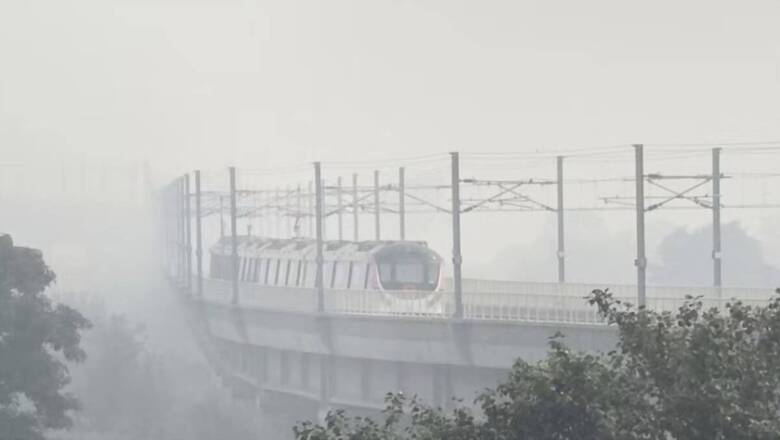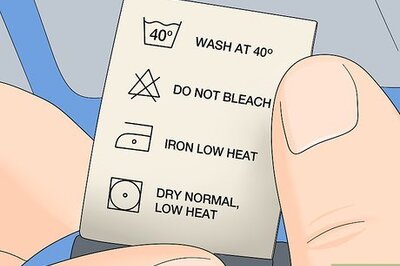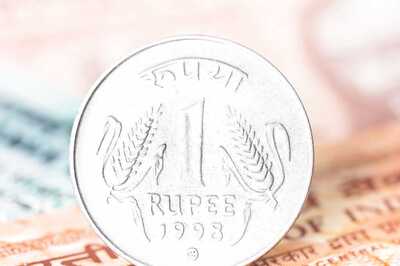
views
The air quality in Delhi slipped to ‘very poor’ category on Saturday and is expected to deteriorate further over the next few days. The national capital’s average air quality index (AQI) stood at 303 at 9.00am, according to the System of Air Quality and Weather Forecasting And Research (SAFAR).
The air quality in national capital regions also not flaring well. According to data collected by Central Pollution Control Board’s stations in Haryana and Uttar Pradesh, the AQI remained above the 300 mark in several areas adjoining Delhi.
In Haryana, Gurugram’s Teri Gram area the score was at 213, Faridabad’s sector 11 at 304, while in Uttar Pradesh, Ghaziabad’s Loni at 377 and Noida’s Sector 62 at 334.
An AQI between zero and 50 is considered ‘good’, 51 and 100 ‘satisfactory’, 101 and 200 ‘moderate’, 201 and 300 ‘poor’, 301 and 400 ‘very poor’, and 401 and 500 ‘severe’.
AQI To Remain ‘Very Poor’ For Few Days
Union Ministry of Earth Sciences, in its bulletin on Friday said that with stubble burning on the rise in neighbouring states of Delhi, the air quality early warning system expected the air quality to dip from today.
“The outlook for the subsequent six days shows the air quality is likely to remain in between very poor and poor,” the bulletin said.
Delhi’s air quality had turned ‘very poor’ last Sunday for the first time since May, mainly due to a drop in temperature and wind speed, which allowed pollutants to accumulate.
Moves To Curb Pollution
The Delhi government launched a campaign to curb vehicular pollution on Thursday, a year after Lieutenant Governor V K Saxena put it on hold, questioning its effectiveness.
Delhi Environment Minister Gopal Rai said the government has identified eight more pollution hotspots in addition to the existing 13 in the national capital and special teams will be deployed there to check pollution sources.
He said the government has also decided to use suppressant powder to prevent dust pollution in the city.
Dust suppressants could include chemical agents like calcium chloride, magnesium chloride, lignosulfonates and various polymers. These chemicals work by attracting and binding fine dust particles together, making them too heavy to become airborne.
The Commission for Air Quality Management, a statutory body responsible for proactively implementing the pollution control plan known as the Graded Response Action Plan (GRAP), had on Saturday directed authorities in the NCR to increase parking fees to discourage private transport and enhance the services of CNG or electric buses and metro trains amid a likely increase in pollution levels.
This action is part of Stage II of GRAP which is implemented when Delhi’s AQI is predicted to turn ‘very poor’.
GRAP categorises actions into four stages: Stage I ‘poor’ (AQI 201-300); Stage II ‘very poor’ (AQI 301-400); Stage III ‘severe’ (AQI 401-450); and Stage IV ‘severe plus’ (AQI >450).
The Delhi government had last month launched a 15-point action plan to mitigate air pollution in the capital during the winter season, with a strong emphasis on addressing dust pollution, vehicular emissions and open burning of garbage.
Why Delhi AQI Dipped To ‘Very Poor’
Unfavourable meteorological conditions and a cocktail of emissions from firecrackers and paddy straw burning, in addition to local sources of pollution, push Delhi-NCR’s air quality to hazardous levels around Diwali every year.
According to an analysis conducted by the Delhi Pollution Control Committee, the capital experiences peak pollution from November 1 to November 15, when stubble burning incidents in Punjab and Haryana peak.




















Comments
0 comment